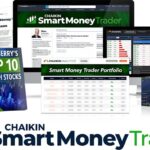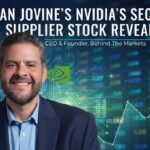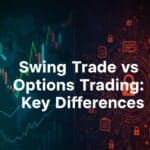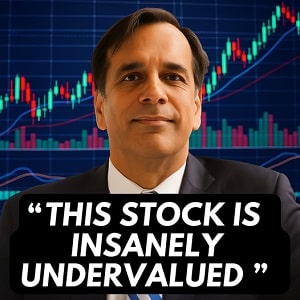Technology revolutions used to come one at a time — now they’re colliding at once, creating what experts call “Convergence X,” the most explosive investment wave yet.
The Collision Course of Modern Technology
Imagine the moment the smartphone was born. It wasn’t just a new gadget — it was the convergence of multiple revolutions: mobile networks, miniaturized computing, and internet connectivity. That single merger of technologies changed the way we work, travel, and communicate.
Today, a similar fusion is happening again — only faster, bigger, and with far more reach. Artificial intelligence, blockchain, quantum computing, and biotechnology are colliding in ways that will reshape entire economies.
This merging of breakthroughs is what investors and technologists call “technology convergence.” And according to investing legends George Gilder and Ian King, this convergence has reached a critical inflection point — one they’ve named “Convergence X.”
In plain terms, it’s where exponential technologies meet exponential data. The results? Entirely new industries… and once-in-a-decade opportunities for investors who understand the pattern.
Below, I’ll break down what tech convergence really means, why it matters right now, how to identify the next winners, and why Gilder and King’s Strategic Fortunes newsletter has positioned itself at the heart of this transformation.
What Is Technology Convergence — and Why It Matters Now
At its core, technology convergence means the blending of once-separate innovations into unified systems that create entirely new markets.
A decade ago, you could neatly separate industries — telecom, software, healthcare, finance. Today, those boundaries have vanished. A fintech startup can be a data company. A pharmaceutical firm might depend on AI algorithms. An automaker can double as an energy storage innovator.
The classic example is your smartphone. It combined the camera, computer, phone, GPS, music player, and payment device — collapsing six markets into one. The next iteration of convergence won’t fit in your pocket. It will shape cities, transportation networks, and global supply chains.
Three powerful forces are accelerating this convergence today:
-
AI and Automation — Artificial intelligence is now embedded in almost every workflow, from logistics to medicine.
-
Data Connectivity — 5G, cloud computing, and decentralized networks are merging data streams from billions of devices.
-
Exponential Computing Power — Moore’s Law is evolving into a new phase driven by quantum and neuromorphic computing.
Together, these forces create compounding innovation, where breakthroughs no longer evolve linearly — they multiply.
This is why Gilder and King argue that the 2020s will dwarf the dot-com boom in scale. The biggest market winners will emerge not from a single technology, but from the intersections between them.
The Economic Engine Behind “Convergence X”
So what exactly is Convergence X?
According to George Gilder and Ian King — two of the most influential technology futurists and investment analysts of the past two decades — Convergence X is the moment when multiple exponential technologies intersect, creating entirely new systems of value.
It’s not just about AI, or blockchain, or quantum computing on their own. It’s about what happens when those forces reinforce one another.
Take this example:
-
AI needs massive computing power.
-
Quantum computing provides it.
-
Blockchain secures the data that powers AI models.
Together, these create a new foundation for global infrastructure — from healthcare to defense to finance.
Gilder and King’s research suggests that U.S. government and private sector R&D spending are converging in a way not seen since the original Manhattan Project. Washington’s AI investments, cloud infrastructure spending, and chip subsidies are all parts of a coordinated effort to maintain U.S. dominance in the digital economy.
Meanwhile, the private sector is racing to commercialize these breakthroughs. Companies like Nvidia, Palantir, and ASML already sit at the heart of this intersection. But Gilder and King believe the next breakout players — the ones they’re tracking inside Strategic Fortunes — are smaller firms leveraging this convergence more nimbly.
In other words, the Convergence X moment isn’t theoretical — it’s already unfolding in real time.
Why Investors Can No Longer Treat Sectors in Isolation
Most investors were taught to build portfolios around sectors: tech, healthcare, energy, industrials. That worked when innovation moved slowly. But convergence has rendered those boundaries obsolete.
Today, every company is a tech company, in some capacity. Tesla is an energy firm disguised as an automaker. Moderna is a data science company that happens to produce vaccines. Even agriculture companies now deploy AI-driven robotics to optimize yield.
This blending means traditional Wall Street analysis — with its “sector coverage” silos — is lagging behind reality. Analysts trained to value old-line industries often miss cross-sector disruptors until after their breakout.
For investors, this creates inefficiency — and opportunity.
Understanding convergence allows you to spot companies whose true value lies in their intersections.
For example:
-
A chipmaker that also develops software for autonomous systems.
-
A cybersecurity company that integrates with blockchain to secure transactions.
-
A biotech firm using AI to shorten drug discovery timelines.
Each represents a multi-layered growth vector, compounding across industries. That’s why Gilder and King’s Convergence X approach focuses on identifying companies sitting directly at those crosscurrents.
If you’re still thinking in “sector boxes,” you’re missing the next wave of market leadership.
Historical Proof — How Convergence Has Created Market Leaders
To understand where this is going, look backward. Every major market revolution has been born from convergence.
Apple (Computing + Design + Connectivity)
Apple didn’t invent the computer, the phone, or the internet. It merged them into a single ecosystem. By uniting design, hardware, and digital services, Apple captured more than $2.5 trillion in market value — a feat of convergence economics.
Amazon (Data + Logistics + Cloud)
Amazon’s real breakthrough wasn’t retail. It was convergence — of logistics efficiency, data analytics, and cloud infrastructure. Today, Amazon Web Services (AWS) generates more operating income than retail.
Netflix (Media + Analytics + Cloud)
Netflix disrupted television by fusing entertainment content with real-time data analytics and cloud delivery. Its recommendation engine, powered by convergence, turned binge-watching into a global behavior.
Each of these success stories began as cross-industry experiments. Convergence transformed them from niche innovators into category dominators.
Now, we’re entering a new era where similar convergence patterns are forming in AI, quantum computing, and biotechnology — the next generation of trillion-dollar opportunities.
The Next Convergence Frontiers (2025 and Beyond)
The next wave of convergence won’t come from a single invention — it’ll emerge from combinations that multiply value creation. Here are the key frontiers shaping 2025–2030:
AI + Robotics
Factories and logistics systems are becoming self-optimizing ecosystems. Companies integrating robotics with AI-driven predictive analytics will dominate global supply chains.
Quantum Computing + Cybersecurity
Quantum power unlocks immense computational speed — but also new vulnerabilities. Firms that combine these technologies to build quantum-proof encryption will lead the next cybersecurity era.
Energy Storage + Smart Grids
The energy revolution isn’t just solar or batteries. It’s the convergence of IoT sensors, AI demand forecasting, and energy storage optimization. These intersections could make renewables as reliable as fossil fuels.
Biotech + Data Analytics
Genomics, machine learning, and bioinformatics are merging to create precision medicine. Companies decoding the genetic-data convergence stand to redefine healthcare profitability.
Each frontier represents the intersection of multiple exponential curves — the sweet spot of Convergence X investing.
For early investors, the challenge isn’t identifying which technology will win — it’s spotting where they converge first.
How to Spot a True “Convergence Stock” Before It Breaks Out
So how can investors identify companies poised to benefit from convergence before the mainstream catches on?
George Gilder and Ian King use a few core filters in their Strategic Fortunes research:
-
Cross-Sector Integration — The company’s technology applies across multiple industries.
-
Data Leverage — It captures and compounds proprietary data from its ecosystem.
-
Scalability — Its business model accelerates as more systems connect (network effects).
-
Government or Institutional Alignment — It fits within long-term policy initiatives (AI, chips, defense).
Here’s a simple example:
A small-cap semiconductor firm that designs AI-optimized chips for defense and healthcare systems. It sits at the intersection of AI + national security + medical computing — a textbook convergence play.
When convergence stocks hit that inflection point, growth can be exponential. Think of Nvidia’s trajectory — up over 3,000% in just a few years as its chips became central to both gaming and AI systems.
Strategic Fortunes focuses precisely on uncovering these kinds of stocks — companies not yet in the S&P 500, but sitting where technological forces are colliding.
The Investor’s Dilemma — Complexity and Timing
The biggest challenge for investors right now isn’t opportunity — it’s overload.
AI, blockchain, biotech, quantum, green energy — it feels impossible to follow everything at once. Every week, new startups launch and legacy firms pivot. The financial media amplifies the noise, while analysts contradict each other.
That’s the paradox of convergence: it creates clarity for those who understand it, but chaos for those who don’t.
The key isn’t to track every technology — it’s to focus on the connections between them.
And that’s exactly what Gilder and King built their Convergence X framework around. Their Strategic Fortunes newsletter distills months of complex data into clear, actionable insights:
-
Which technologies are merging fastest.
-
Which small-cap companies are strategically positioned.
-
When the convergence curve will trigger exponential growth.
They’ve spent decades tracking these inflection points — Gilder predicted the digital revolution, and King forecasted the rise of cryptocurrency infrastructure.
Now, their focus has shifted to what they believe is the defining investment wave of the next decade.
Key Takeaways — The Case for Convergence Investing
Let’s simplify everything we’ve discussed:
-
Convergence = the fusion of technologies creating exponential new markets.
-
Convergence X = the current multi-technology intersection (AI, blockchain, quantum, biotech).
-
Opportunity = early identification of cross-sector innovators before Wall Street catches up.
-
Strategy = stop thinking in old “sector boxes” — look for integration points.
-
Solution = guided intelligence like Strategic Fortunes to navigate fast-moving data ecosystems.
The next generation of trillion-dollar winners won’t come from isolated breakthroughs — they’ll come from convergence. Investors who understand that principle can position themselves before the crowd.
Learn More About Convergence X
If you’ve ever felt like the pace of innovation is outpacing your portfolio strategy, this is the moment to reset.
The world’s leading futurists — George Gilder and Ian King — are showing investors exactly how to harness convergence as an investing edge through their Strategic Fortunes research service.
Their “Convergence X” framework reveals the under-the-radar companies positioned at the junction of the most powerful technologies of our time.
And right now, they’ve pinpointed a small handful of stocks that they believe sit at the very center of this multi-trillion-dollar transformation.
👉 Learn more about Convergence X and the Strategic Fortunes newsletter here.
FAQ: Understanding Convergence X and the Future of Tech Investing
What is technology convergence in investing?
It’s the merging of multiple tech fields — like AI, blockchain, and biotech — that creates entirely new business models and investment opportunities.
What does “Convergence X” mean?
Coined by George Gilder and Ian King, it refers to the intersection point of exponential technologies that amplify each other’s potential.
Why should investors pay attention now?
Because convergence waves produce asymmetric returns for early entrants — often before mainstream analysts recognize the shift.
Are convergence stocks risky?
Yes, they’re disruptive by nature. But with structured frameworks like Strategic Fortunes, investors can filter hype from real, scalable innovation.
How can I start investing in Convergence X opportunities?
The most efficient way is by following analysts who specialize in cross-technology analysis — like Gilder and King — and staying informed through Strategic Fortunes.
Is Convergence X the same as AI investing?
AI is a major component but not the whole story. Convergence X captures how AI, quantum, blockchain, and biotech intersect — amplifying each other’s value.
